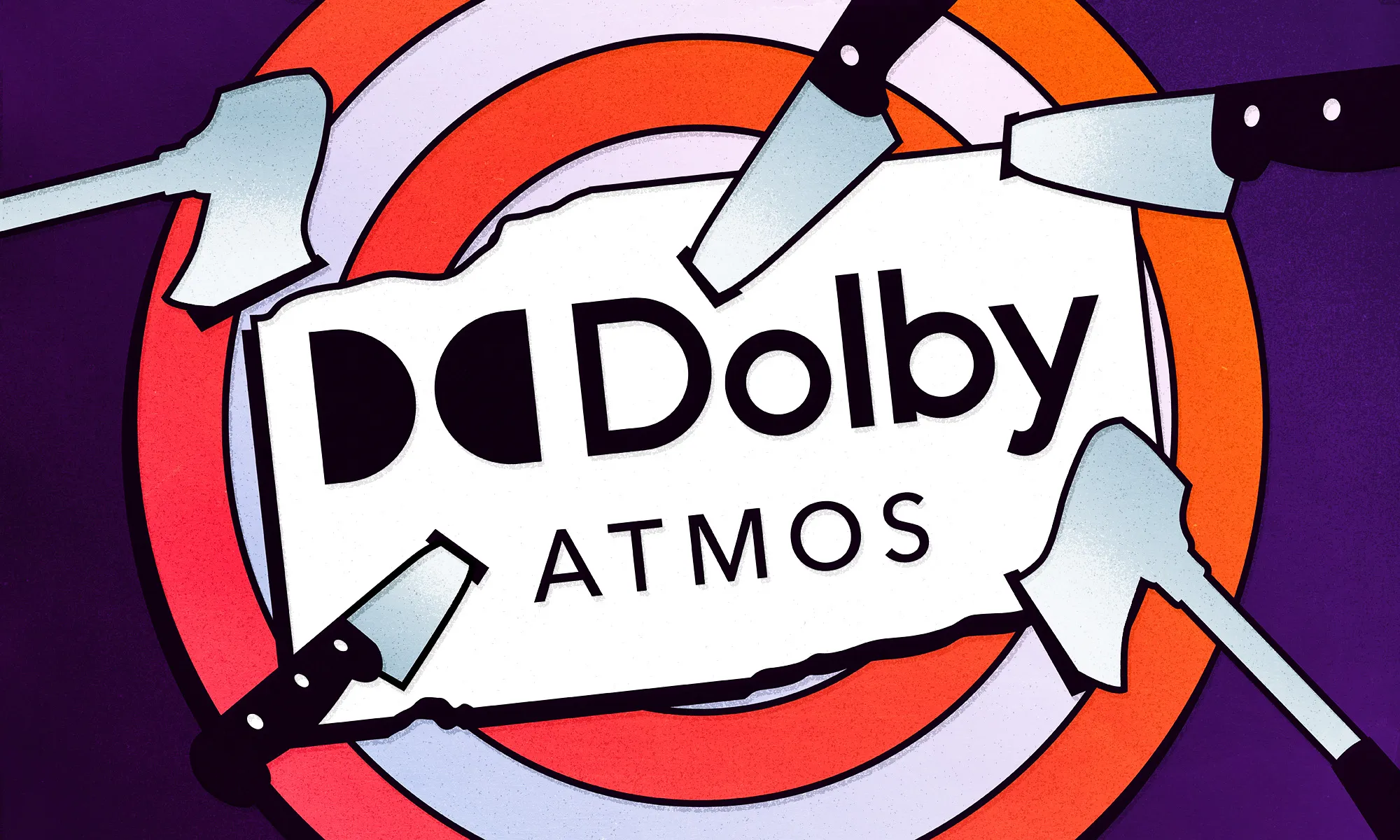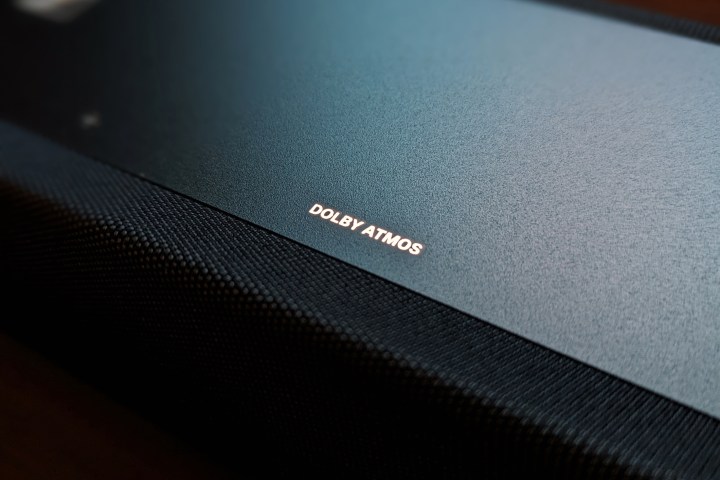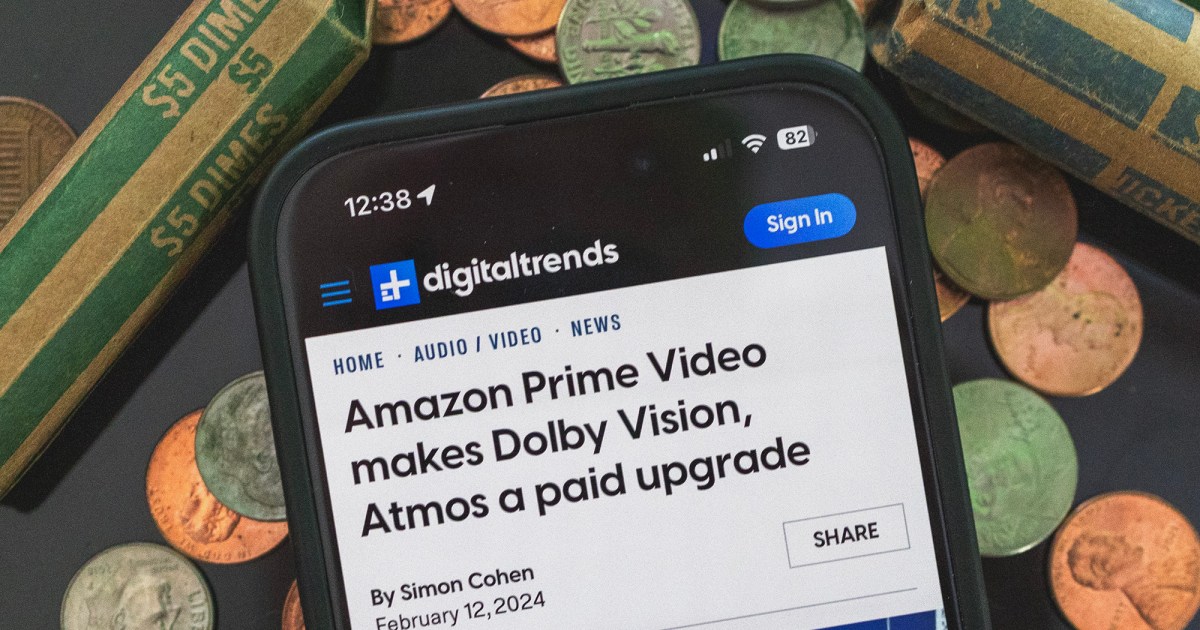

While you consider immersive, 3D sound for motion pictures and music, one title often involves thoughts: Dolby Atmos. Regardless of the existence of competing encompass sound codecs and applied sciences,like DTS:X, MPEG-H, Sony 360 Actuality Audio, and Auro3D, they barely register when in comparison with the juggernaut that’s Dolby Atmos. With sturdy (and rising) help from film studios, music labels, streaming companies, recreation consoles, smartphones, and audio tools makers, there’s little doubt that Dolby Atmos and Dolby Atmos Music have turn into the de facto 3D sound requirements.
And but, if Google and Samsung get their method, Dolby Atmos’ reign because the king of immersive audio is likely to be about to satisfy its largest problem to this point. Collectively, the 2 tech giants have been quietly engaged on an open-source and royalty-free 3D sound format recognized by the awkward title Immersive Audio Mannequin and Codecs. But when historical past has taught us something, it’s that format wars are hardly ever fought for the advantage of the general public. And even a free model of Atmos that’s each bit nearly as good as the unique might face harrowing obstacles to adoption.
Why do we want one other Dolby Atmos?

Why have Google and Samsung teamed as much as create a Dolby Atmos competitor? It’s most likely considerably about management, however nearly actually largely in regards to the cash. Particularly, the licensing charges that Dolby Labs prices any firm that wishes to make a Dolby Atmos-compatible services or products, like a TV, a streaming media participant, a soundbar — or a smartphone. (Lest we neglect, Google and Samsung are the driving forces behind Android and between them personal a significant chunk of the non-Apple smartphone market).
It’s arduous to say simply how a lot cash Samsung and Google pay to Dolby Labs yearly (Dolby licensees are forbidden from sharing the phrases of their agreements), however we do know that in 2022, Dolby Labs recorded $1.25 billion in income. It doesn’t get away the licensing income from Dolby Atmos individually, however you’ll be able to wager it represents a major share of the overall.
Past the associated fee financial savings, Samsung touts the advantages of getting a single 3D audio normal for a whole business. It claims that IAMF will enhance the general audio expertise by scene-based AI evaluation, in addition to give listeners the power to emphasise the portion of a soundtrack that issues most to them. In a single instance, a sports activities broadcast may very well be adjusted to emphasise the commentators’ dialogue or the on-field motion.
Who’s going to make use of IAMF?
IAMF seems to supply audio creators the identical degree of flexibility in terms of creating spatial audio mixes that Dolby Atmos does, together with built-in adaptation to all kinds of playback gadgets and environments, from headphones to soundbars to full house theater techniques.
Since Dolby Labs additionally prices licensing charges for its Dolby Atmos software program instruments — between $100 and $300 relying in your eligibility for reductions — there’s a direct monetary incentive for creators (particularly novice recording artists) to start out exploring what IAMF can do. That’s very true if adopting IAMF finally ends up being a comparatively clean transition from Dolby’s instruments.
Once more, it’s arduous to say how a lot a file label like Common Music Group or a film studio like Disney spends on Dolby Atmos for his or her music and film productions, however a free different doubtless would show tempting.
Royalty-free, however not cost-free

For people at house to listen to IAMF content material, we’ll want a supply of IAMF and appropriate gadgets. It’s removed from assured that the bigger leisure business will oblige.
One of many keys to Dolby Atmos’s huge adoption has been model consciousness. Dolby Atmos started its public life in industrial film theaters in 2012, the place it rapidly earned a fame for placing audiences within the literal middle of the motion, as music and sound results zoomed overhead for the primary time. As quickly because the expertise made the leap to house theaters, it turned vital for any critical cinephile.
Seeing the Dolby Atmos emblem on AV receivers, Blu-ray gamers, TVs, and soundbars turned an enormous promoting level, although — as we’ve currently argued — there’s not an actual connection between the Dolby Atmos model and a particular sound expertise. Nonetheless, a powerful and well known model is tough to beat.
IAMF will discover itself in a well-recognized chicken-or-egg battle in terms of adoption. Regardless that IAMF is open-source and royalty-free, there’ll nonetheless be prices related to implementing it. Earlier than main studios, labels, and content material distribution firms like Netflix comply with spend money on IAMF content material, they’ll need to see proof of demand — this is likely one of the explanation why DTS:X is so arduous to return by on streaming platforms.
If we don’t personal IAMF-compatible tools, why would these firms make such an funding? And it received’t be straightforward for makers of TVs, AV receivers, or soundbars to persuade us to purchase IAMF merchandise if there’s no content material.

I’m keen to wager that lots of people have purchased Dolby Atmos-capable merchandise purely on the energy of the Dolby Atmos model. They most likely assume that they’ll get a film theater-like expertise as quickly as they plug it in, although that doubtless received’t be the case (a Dolby Atmos system with out Dolby Atmos content material can solely ship upmixed stereo or 5.1 sound.) With out Atmos’s highly effective model recognition, IAMF received’t be capable of accomplish the identical job.
Gadget producers may merely take the lengthy view and add IAMF to any product that presently helps Dolby Atmos, to prime the pump. They could even promote it as a future-proofing characteristic to “be prepared when IAMF content material involves your favourite streaming service!”
The hope is likely to be that, ultimately, the put in base of IAMF merchandise can be sufficiently big that the content material suppliers and distributors turn into keen to throw their hats within the ring.
Google, with its management over Android, Google TV, and Google Assistant-driven Nest gadgets, might merely add IAMF to all of those platforms, giving the nascent format a formidable head begin.
It’s additionally value noting that Google and Samsung aren’t on this alone. IAMF gained its royalty-free standing by way of the Alliance for Open Media, which incorporates representatives from Apple, Netflix, Google, Samsung, Intel, Microsoft, and Meta — simply to call the heavyweights. IAMF might achieve a variety of traction by way of these firms’ mixed services, a lot because the AV1 codec has began to do.
At that time — if it ever involves move — your complete content material ecosystem might determine to stroll away from Dolby Atmos and save itself the entire related prices. And but, by some means this appears unlikely.
We’ve seen this film earlier than

There’s a parallel between the Dolby Atmos-IAMF relationship and the Dolby Imaginative and prescient-HDR10+ relationship. Similar to IAMF, HDR10+ is a royalty-free dynamic HDR format that has many options in frequent with Dolby Imaginative and prescient. And identical to IAMF, Samsung is HDR10+’s largest supporter. To today, no Samsung TV has included Dolby Imaginative and prescient.
And but, regardless of its royalty-free nature, Samsung’s full-throated help, and the truth that it’s been round for a few years, the HDR10+ normal nonetheless isn’t utilized by main streaming companies like Netflix, Disney+, Peacock, or Max.
This means that it’s going to take greater than the promise of decrease prices to get widespread adoption of IAMF.
The price of confusion
This brings us again to the query of branding and consciousness. Earlier advances in film audio have had the advantage of the total weight of the Hollywood hype machine. At this level, I doubt there’s a moviegoer alive who hasn’t heard (and seen) the THX “Deep Word” intro previous to watching a film that makes use of George Lucas’s well-known invention. And as I discussed earlier, Dolby Atmos was thrilling theater audiences lengthy earlier than it turned out there at house. Will IAMF ever get the identical crimson carpet rollout?
If it does, there’s an opportunity that folks will turn into acquainted sufficient with IAMF that they begin to search for it, and presumably base their shopping for selections on its presence.
If it doesn’t, most people will doubtless solely discover out about it by websites like Digital Developments. And probably the most we’ll be capable of say is one thing like, “it’s a royalty-free model of Dolby Atmos.” Not precisely a ringing endorsement.
Then there’s the game-time determination query. Bear in mind after I stated that gadget makers are prone to construct merchandise that help each Dolby Atmos and IAMF? Any streaming service (or disc-based media) that presently presents Dolby Atmos — and desires so as to add IAMF — should present its subscribers with a method to decide on between these codecs, including but extra complexity.
Don’t get me mistaken, competitors is nearly at all times factor, and I’m excited to see that Dolby Atmos’ close to stranglehold on immersive audio is about to face its first actual problem. However I’m deeply skeptical that IAMF — with out the assistance of a significant branding and consciousness effort — will show to be an alternate that may see the mass adoption wanted to carry its personal.
Editors’ Suggestions
Supply Hyperlink : Lowongan Kerja 2023


